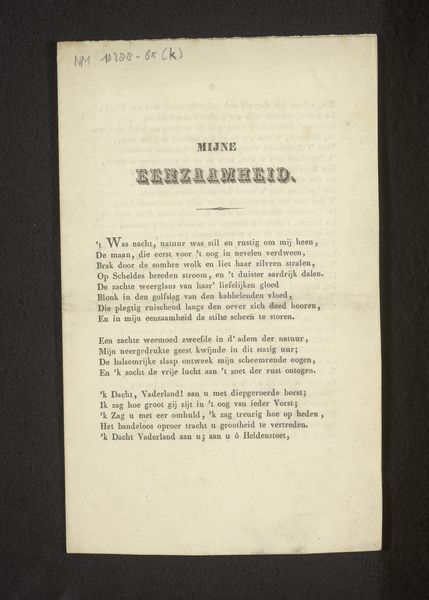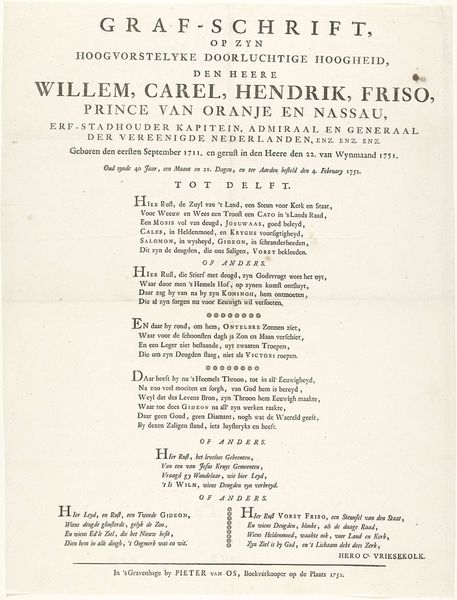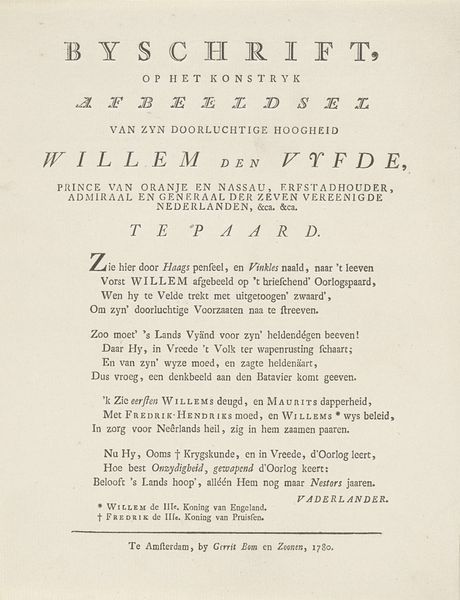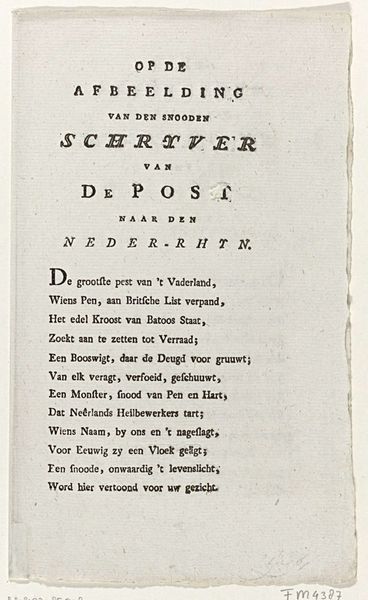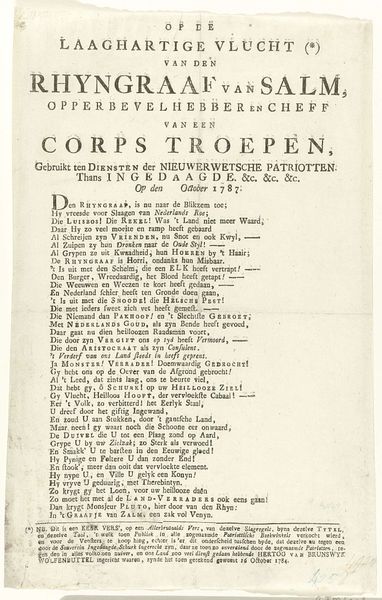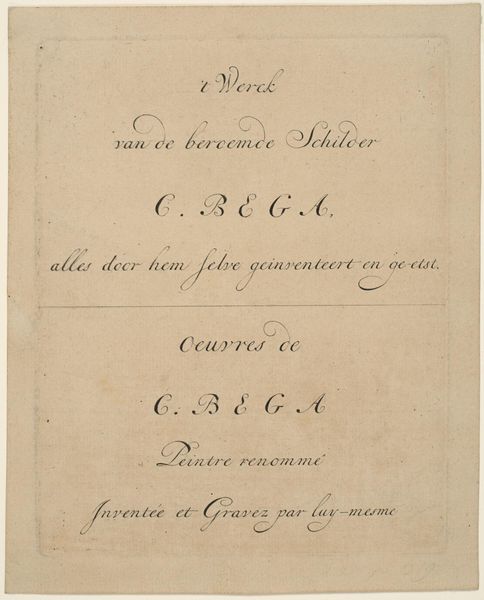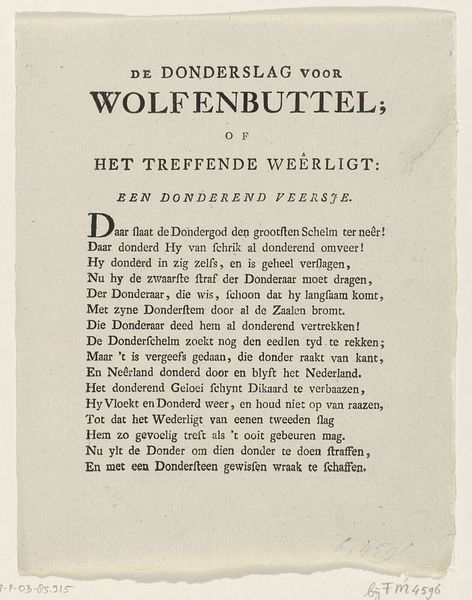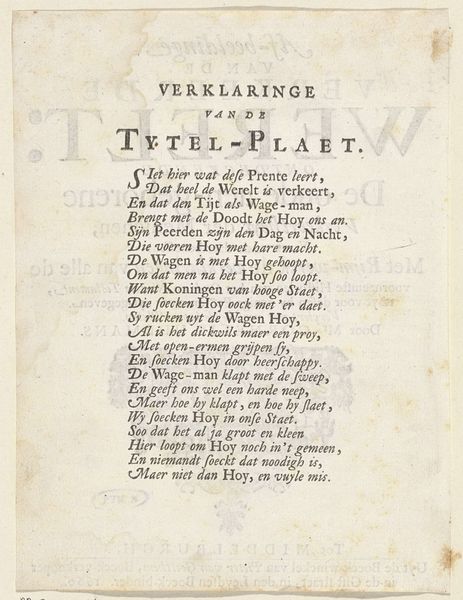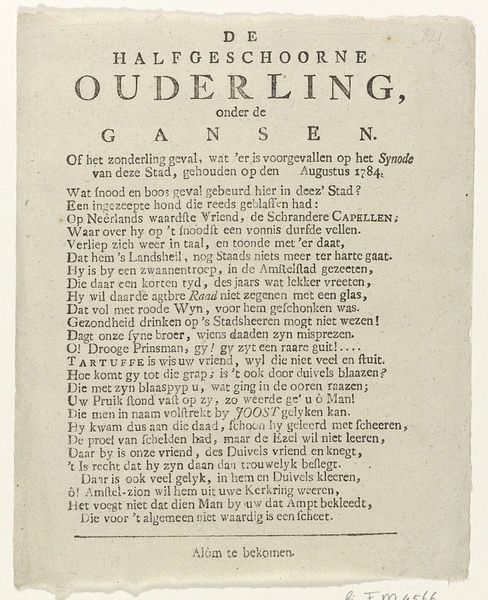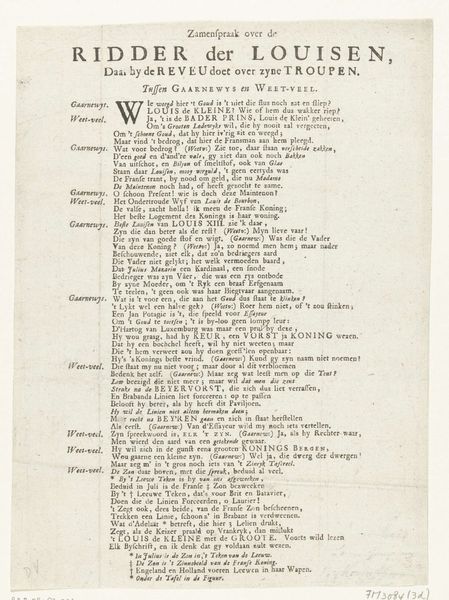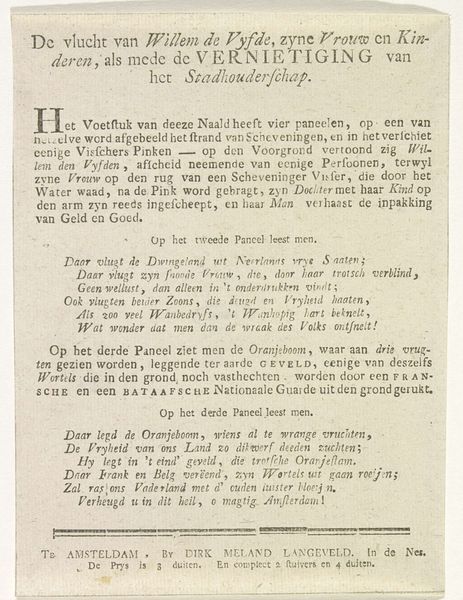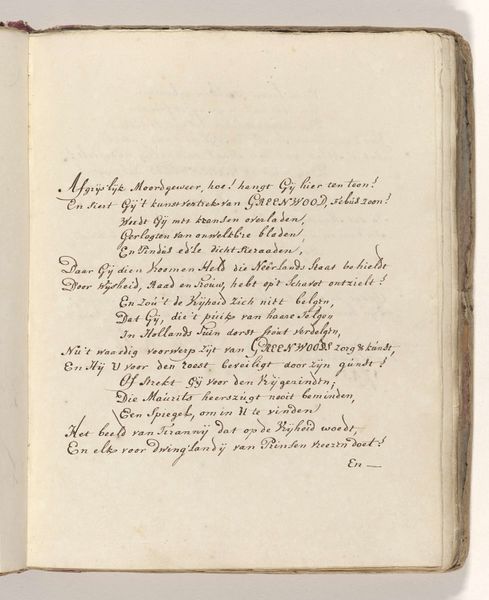
print, paper, typography
#
aged paper
#
dutch-golden-age
# print
#
paper
#
recolouration
#
typography
#
fading type
#
ink colored
#
genre-painting
#
handwritten font
Dimensions: height 340 mm, width 205 mm
Copyright: Rijks Museum: Open Domain
Editor: Here we have "Spotvers op Pieter Gosse," a print on paper from 1781 by an anonymous artist. The typography gives it a very aged, almost ghostly presence. What feelings or thoughts does this piece conjure up for you? Curator: It feels like a fragment of a forgotten argument, a whisper from a time when words carried a different kind of weight. The poem is a "spotvers," a topical verse, aimed at Pieter Gosse, a bookseller. I imagine this broadside, tacked to a wall, causing a stir in a coffee house. Do you get a sense of the stakes from reading the text, even without knowing the context? Editor: A little. I mean, "gestraft" means punished, right? And it talks about someone's "doomed writings"... it sounds pretty accusatory. Curator: Exactly! It's a pointed critique. Think of the power dynamics: an anonymous poet publicly shaming a bookseller, accusing him of betraying some higher authority. Perhaps it involves a forbidden publication. There’s a lot implied between these lines, don’t you think? Editor: Yes! It makes you wonder what Gosse did. It feels more personal, more charged somehow, than just looking at words on a page today. Curator: Right. Today, things might spread virally online. This feels much more like a single spark that has ignited a little flame. I think these ephemeral paper remnants are often the most potent historical artifacts, precisely because they capture something of the energy of the present as it unfolded. Editor: I see what you mean. I’ll definitely look at works like this differently from now on. Curator: Me too; each look reveals more intriguing depths and nuances.
Comments
No comments
Be the first to comment and join the conversation on the ultimate creative platform.
